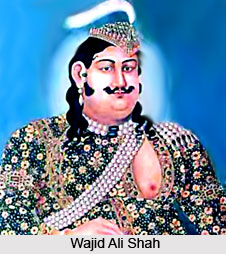 Styles of thumri have developed gradually along the course of the development of the art. Thumri has had a rather long tradition and can be traced right back to the age of classical Sanskrit plays and later to the Vaishnava Bhakti cult and the rasa natya. However, the Thumri as it is known today received great patronage, currency and shape during the days of Wajid Ali Shah when he was the Nawab of Lucknow, from 1847 to 1856. Its present tradition is also linked with Kathak dance and Thumri continues to be an essential feature of the Kathak nirtya. Thumri also evolved as a mode of vocal music without any recourse to the visual, i.e., acting or abhinaya, and aiming its expression only through music and words.
Styles of thumri have developed gradually along the course of the development of the art. Thumri has had a rather long tradition and can be traced right back to the age of classical Sanskrit plays and later to the Vaishnava Bhakti cult and the rasa natya. However, the Thumri as it is known today received great patronage, currency and shape during the days of Wajid Ali Shah when he was the Nawab of Lucknow, from 1847 to 1856. Its present tradition is also linked with Kathak dance and Thumri continues to be an essential feature of the Kathak nirtya. Thumri also evolved as a mode of vocal music without any recourse to the visual, i.e., acting or abhinaya, and aiming its expression only through music and words.The gharana creed and convention does not have as much of a hold on Thumri as it does on the Khayal. The reason for this is that the nuances of Thumri are not easy to copy and have a subjective character in mood-expression. The Thumri sings of the viraha of Radha or the gopi; it is the main theme, and the effect is sensuous, emotional charged and deep. As for its spiritual significance, it is prema-bhakti, of the prakrti (the transient female element or atma) towards the purusa (the eternal male element; paramatma; god).
Types of Thumri
There are different types of Thumri that are practiced and are in vogue.
Banaras Anga Thumri: It very much suited to the emotive aspects, interpreting the song, the phrases, the words, even projecting several sancari bhavas through vocal techniques, called kaku-prayoga and bola-banava. It requires a non-obtrusive theka in slow tempo in the main phase of the rendering. This style of thumri is similar to the bada khayal, since its bola-banava (mobilizing the words), kahan (utterance), phrasing and rumination is centered round raaga-anga and mixes the main raaga-anga harmoniously and effortlessly, with the song without sudden flights.
For more, visit the link below: